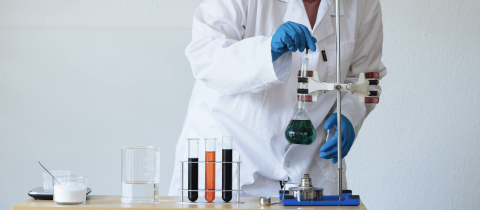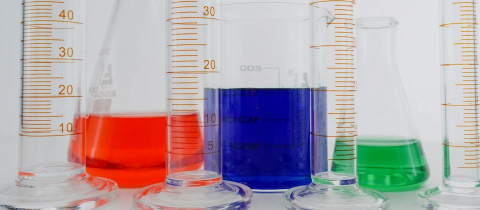Glyphosate is probably the most widely used herbicide in the world. It is also the most controversial. Why? For one, it is the herbicide that crops like canola, corn and soy have been genetically engineered to resist, and any reference to genetic modification is guaranteed to spark debate. Add to this the listing of glyphosate as a “probable human carcinogen” by the International Agency for Research on Cancer (IARC) and the fact that glyphosate residues are commonly found in foods and therefore in our bloodstream, and you have the makings of a major brouhaha!
It is critical to note, however, that IARC’s analysis is based on “hazard,” which is the potential to cause harm, rather than on “risk,” which is a determination of whether there is actual harm by taking into account extent and route of exposure. The IARC conclusion has been much criticized because the animal studies that showed carcinogenicity had various methodological flaws and were greatly outnumbered by studies that showed no such effect. The same criticism has been made of the human epidemiological studies that linked glyphosate with non-Hodgkin’s lymphoma in an occupational setting.
Now the European Chemicals Agency (ECHA), an independent organization that evaluates chemicals to help implement the European Union’s stringent chemical legislation, has weighed in on the glyphosate issue with its own hazard analysis. Its Committee for Risk Assessment, composed of scientists from over two dozen nations, has concluded that the available scientific evidence does not meet the criteria to classify glyphosate as a carcinogen, as a mutagen or as a reproductive toxin.
How can two reputable agencies come to such different conclusions based on the same body of evidence? Basically, ECHA bases its evaluation on the preponderance of evidence while for IARC it is enough if some studies suggest carcinogenicity in order to classify a substance as a “probable carcinogen.” The IARC evaluation also flies in the face of the findings of numerous national regulatory agencies, none of which have found glyphosate to be a carcinogen and have concluded that there is no reason to eliminate the use of the chemical.
These agencies, such as FDA, the German Federal Institute for Risk Assessment, the European Food Safety Association and Health Canada, have looked not only at hazard, but at risk. Based on extensive cellular, animal and human epidemiological research, they have arrived at an acceptable daily intake (ADI) of glyphosate somewhere in the range of 0.5 to 2 mg/kg body weight. Using the more conservative value, this means that a 50 kg person could take in 25 mg a day without any effect. Given the known relationship between intake and urinary excretion, at the above level of intake this would result in about 4 mg being detected per liter of urine. Studies have shown that the actual secreted amount in the general population is 1-3 micrograms/L! This corresponds to 1/1300th of the ADI, which actually has a 100-fold safety factor already built into it.
This would imply that our actual exposure, and consequently the risk attributed to glyphosate exposure is very low. Admittedly, though, in reality, the ADI is just guess, albeit a highly educated one. There are activist groups, however, that claim the ADI is orders of magnitude too large and point to a single study in mice that showed some harm at a concentration of 1 part per billion (ppb) in their food, which translates to roughly one millionth of the ADI. That study also claims to have found glyphosate residues in common foods to the extent of 1000 ppb. The 1 ppb claim is not corroborated by any other study and the amounts of glyphosate found in food by the lab in question have not been subjected to peer review. Analysis for glyphosate residues is notoriously difficult which is the reason that FDA in the US suspended its project to detect such residues in the food supply. Contrary to what activists claim, this was not due to pressure by industry, but rather to disagreement among researchers about how such residues were to be determined.
It is safe to say that the glyphosate issue will never be resolved to everyone’s satisfaction. There are too many factors involved. Farmers favour glyphosate, especially in conjunction with genetically engineered herbicide resistant crops because it increases yields and profits. It also makes possible “no-till” farming which is environmentally friendly as it does not require tractors going back and forth. No-till also reduces soil erosion. But if it turns out that the claim linking glyphosate with non-Hodgkin’s lymphoma is sound, then it is farmers who are at risk through occupational exposure. The public will continue to worry about glyphosate because, albeit questionably, it has been linked to cancer. Unfortuantely the actual experiment that would give us the answer cannot be done for ethical, logistical and economic reasons. It would involve following groups of subjects for decades with the only difference between them being the extent to which their diet is tainted with glyphosate.
Aside from the study that cannot be done, there are hundreds of studies on glyphosate. Each publication usually ends with “more research is needed.” That’s because science isn’t black or white, it comes in various shades of gray. Moreover, the shades are open to interpretation and different conclusions can be drawn from the same data depending on an understanding of scientific methodology, statistics and dose-response relationships. And then there are personal agendas and biases that can lead to cherry-picking of data to support whatever view one has. Industry obviously has biases, but so do some academic scientists who have forged careers based on critiquing substances that they believe have been introduced by companies eyeing profits without adequate regard to public safety. This often results in vigorous head-butting, with both sides buttressing their arguments with selective references to the scientific literature.
With the plethora of papers being published, some very good, some very bad and most mediocre, just about any stance can be supported. This makes for muddied waters, especially when the public is concerned. What is worth worrying about and what is not? Throw emotion into the mix, as is the case whenever carcinogens are mentioned, and confusion reigns supreme. In the end we are left with making an educated guess. Mine is that the trace residues of glyphosate we encounter in our food are unlikely to increase the risk of cancer.







